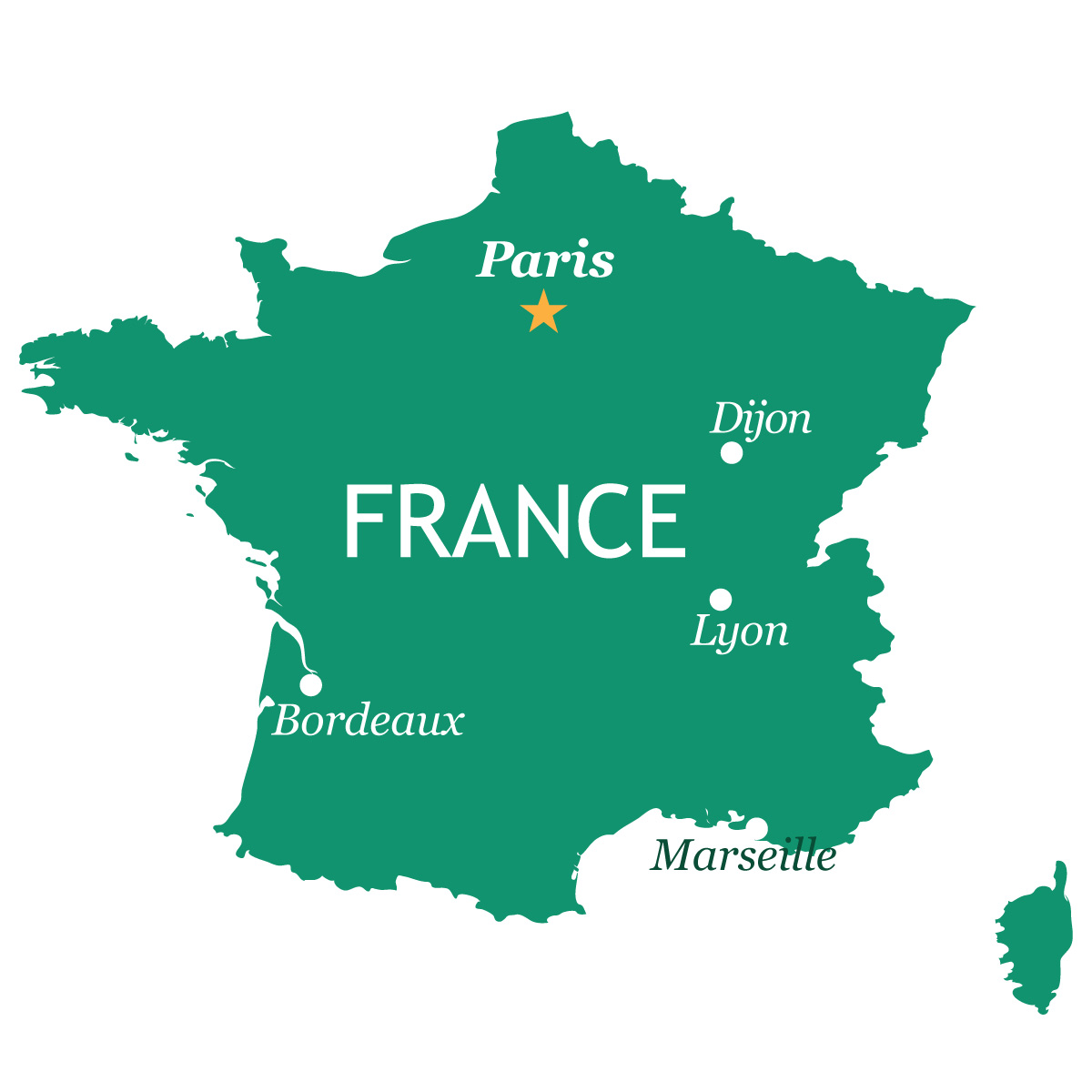
France
France is centrally located on Europe’s peninsula. The cuisine in this country ranges from north to south and east to west depending on climate and neighboring influences. Grab your kids and let’s learn about France!
QUICK STATS

Centrally situated on Europe’s peninsula bordered by Belgium, Germany, Switzerland, and Italy on the East; and Spain on the South West. The English Channel on the North, Bay of Biscay on the West, and Balearic Sea on the South.
A brief history to learn about France
Celtic Gauls arrived in France from central Europe during the Iron Age (800-50BC). In 51 BC, France became a part of the Roman Empire after its conquest by Julius Caesar. Germanic Franks arrived in the late 400s AD and took over control. The area became the Kingdom of France in 987 AD with the Treaty of Verdun.
In the Middle Ages, monarchies ruled France, until the French Revolution in 1789 AD, which overthrew the monarchy and created one of the first modern Republics.
This Republic lasted until Napoleon Bonaparte declared his French Empire. After he was defeated, France continued to switch back and forth between monarchy, republic, and empire.
During World War II, much of France was controlled by Germany. However, the people coordinated a resistance and established France as a Republic once again.
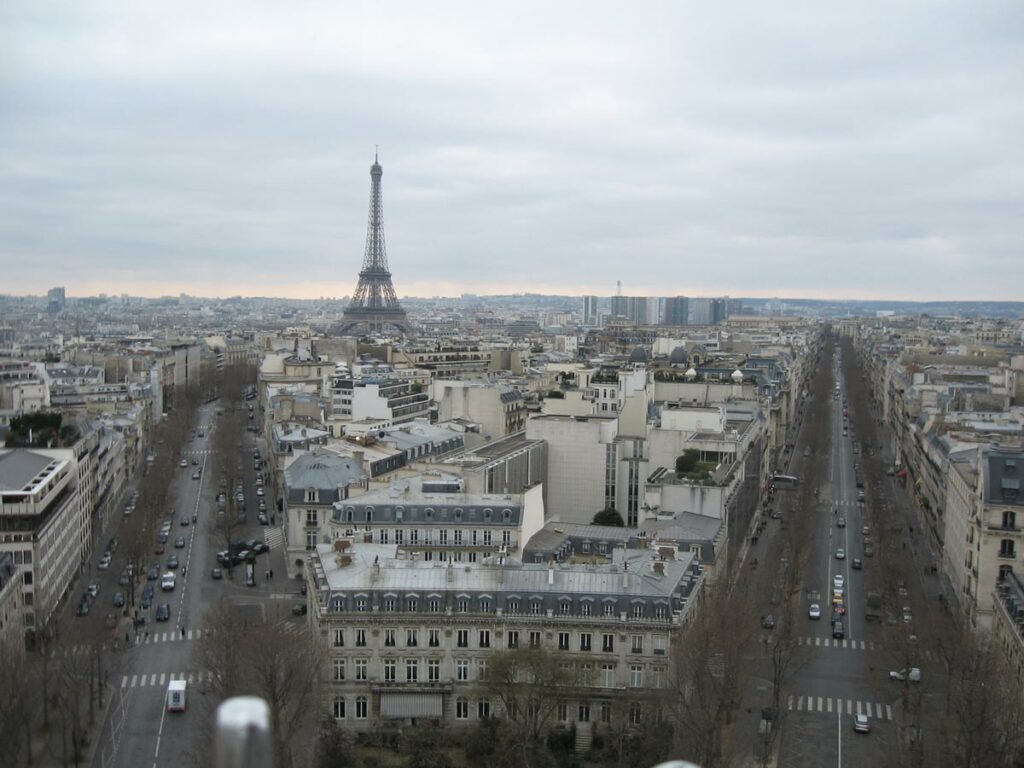
Fun facts about France for kids
- France produces over 1,000 types of cheese.
- In France, it is believed that placing any bread upside down on a table is bad luck.
- France’s famous bicycle race, the Tour De France, is over 100 years old.
French food
Food has a special place in French culture. Meals are a time for enjoying the company of family and friends. While specialty foods vary by region, French cuisine, in general, is known for its wine, cheese, and bread.

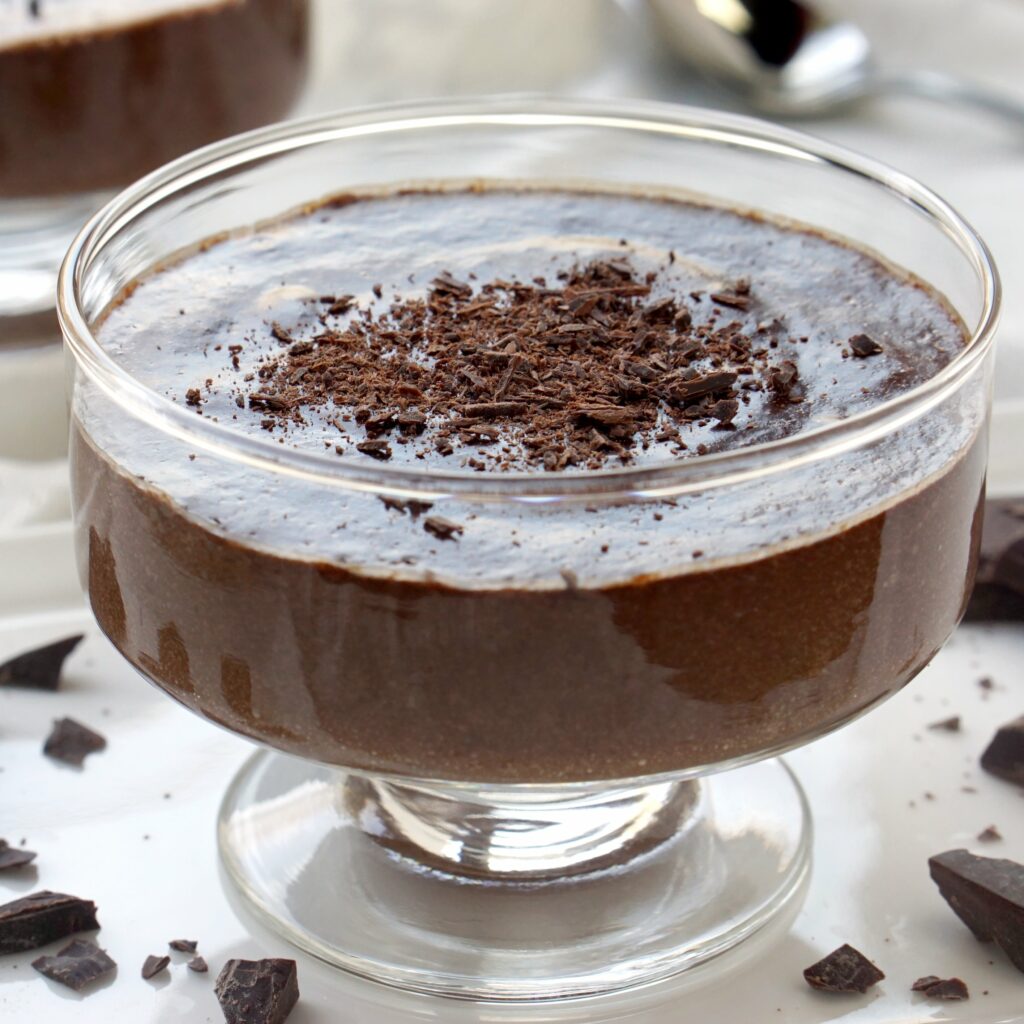
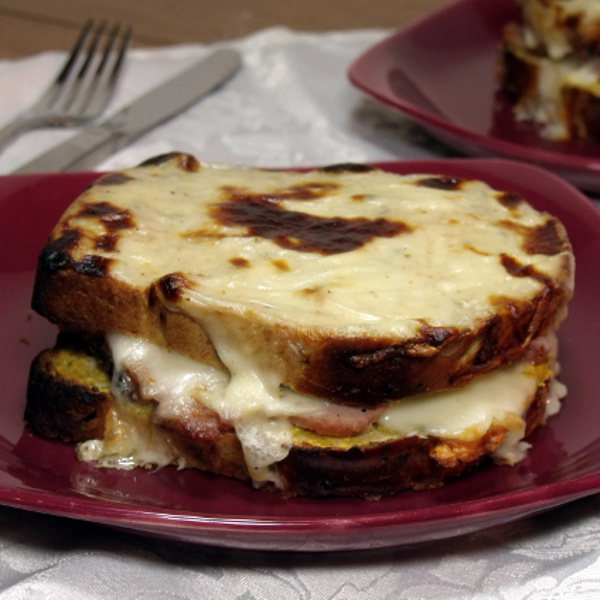
What do the French eat? Mealtime in France.
The French like to eat three square meals at set times. They are not really big on snacking throughout the day or quick, on-the-go, meals.
Breakfast (le petit déjeuner)
Breakfast is a light meal, typically consisting of a baguette with butter and jam and small coffee or espresso, sometimes croissant or yogurt.
Lunch (le déjeuner)
Lunch in France is often just as big of a deal as dinner. The French get a standard lunch break from 12-2 pm, and many shops close during this time. Often lunch will last the full 2 hours.
Dinner (le dîner)
Dinner is a second large meal, often involving 3-5 courses including a first course (entrée), the main meat dish (plat), sometimes salad (salade) course, a cheese course (fromage), and possibly dessert (dessert). The French typically serve dinner around 8:30 pm. It is often 2 hours of leisurely enjoying the company of family or friends.
In France, salad is not considered a first course, rather, it is eaten after the main meat dish to cleanse the palate before the cheese course or dessert.
Sometimes the cheese course is served as dessert.
The French serve beverages at room temperature, not cold or with ice.
Food etiquette in France
It is polite to keep both hands on the table while eating, but do keep your elbows off.
It is expected that guests will arrive 10-15 minutes late for a dinner party. The French consider arriving right on time to be rude.
When attending a dinner party, it is common to bring a small gift for your host (flowers or a small box of chocolates or candies).
Eating begins once the host serves everyone and says “bon appétit”.
The French eat with their fork in their left hand and the knife in their right. They do not switch hands.
When you finish your meal, place your fork and knife together on your plate at the four o’clock position. This lets the host know that you don’t want any more food.
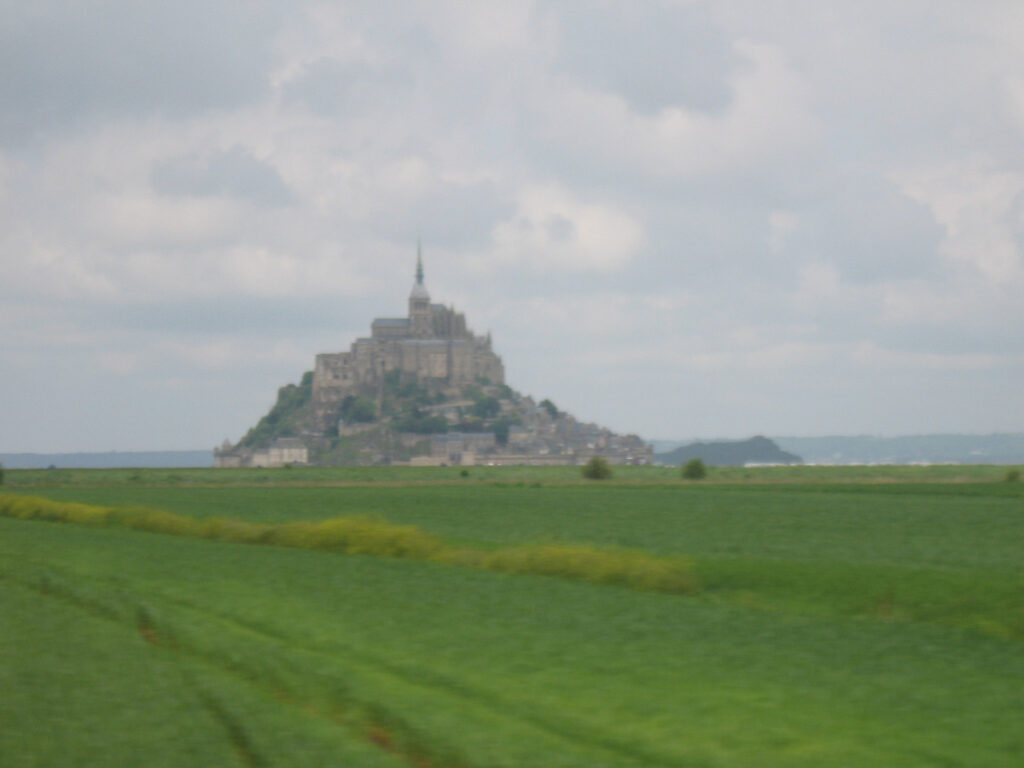
French food by region
France can be divided into 6 – 18 regions, depending on your purpose. Here we’re taking a look at the cuisine of a few. But there are many more you could learn about in your France unit!
Normandy and Brittany
In the northwest of France, you find Normandy and Brittany. Normandy (the location of the historic D-Day invasion during World War II entry) is known for seafood, dairy (cheese, butter, and cream), and apples.
Coquilles Saint-Jacques (scallops in cream sauce) is a popular appetizer here. Poulet à la Normande (chicken with apples and mushrooms) is a loved main dish. Tarte Normande (a simple apple tart) is a popular dessert.
You will also find savory buckwheat crepes, called galettes de Bretagne, filled with egg and ham served for dinner or by street vendors.
Burgundy
Burgundy, in the east-central part of France, is known for its hearty stews and red wine. (The capital of the historic Burgundy region is Dijon, home to the mustard of the same name.)
Beef bourguignon (beef stew with red wine, onions, and carrots), coq au vin (chicken braised in red wine), and gougères (cheese puff pastry) are popular dishes in this region.
Provence
Provence in the southwest of France feels very Mediterranean in their food. Here you find an emphasis on olive oil, garlic, fresh herbs (basil, rosemary, oregano), and tomatoes.
Tapenade (an olive dip) is a popular appetizer, and socca (a chickpea flour pancake) is a tasty street food.
Fougasse (a focaccia-like bread) and ratatouille (a vegetable casserole of tomatoes, zucchini, and eggplant) also come from this region.
Holidays in France
Christmas (Nöel, December 25)
The French serve a huge Christmas Eve meal/party after Midnight Mas, called “Le Réveillon de Noël”. Christmas lunch and dinner are also large affairs. Oysters are popular, as well as foie gras (duck liver), game meat, a fancy roast beef, quail, or pheasant.
13 desserts is a unique Provençal tradition (not in all of France) to represent Jesus and the apostles. Dates, pears, oranges, candied fruit, and cookies are often on the spread.
La bûche de Nöel is the classic Christmas dessert.
Nougat (a chewy candy with almonds) is a sweet treat from the south of France popular at Christmastime.
Epiphany (Épiphanie, January 6)
Epiphany is a day celebrating the visit of the Maji to the baby Jesus. On this day, the French put their Wise Men figurines
This is also the day they eat galette de rois (King’s cake).
Candlemas (La Chandeleur, February 2)
Forty days after Christmas marks the date for Candlemas. This day celebrates when Jesus’ parents presented him in the temple in Jerusalem. In France, it is a tradition to put away Christmas decorations on this day and eat crêpes.
Mardi Gras (Carnival, date varies)
Carnival in France is the festive period of a few weeks that culminates on Mardi Gras (fat Tuesday) before Ash Wednesday (the beginning of the Christian fasting period of Lent). The French celebrate with masquerade parades, masked balls, and outdoor feasts.
Beignets (donuts) are a popular treat to enjoy. And galette de rois (King’s cake) often makes an appearance again.
Bastille Day (La Fête Nationale or Le Quatorze Juillet, July 14)
This summer celebration remembers the storming of the Bastille that ended the French Revolution. The French celebrate with parades and picnics.
Picnic foods like pan bagnat (a Provencal tuna sandwich) are common in the south of France. While all throughout France you will find picnics of bread, cheese, and charcuterie (meats). Quiche is another French picnic favorite.
At home ideas for kids to learn about France
As a part of your homeschool France unit study or as a supplement to your child’s France unit at school, try some of these ideas at home!
- Host a dinner party (for your family or invite some friends). Make it multi-course and incorporate some of the etiquette and fun facts in your meal.
- Listen to French music while preparing your French dinner.
- Plan a summer picnic, French style, to celebrate Bastille Day!

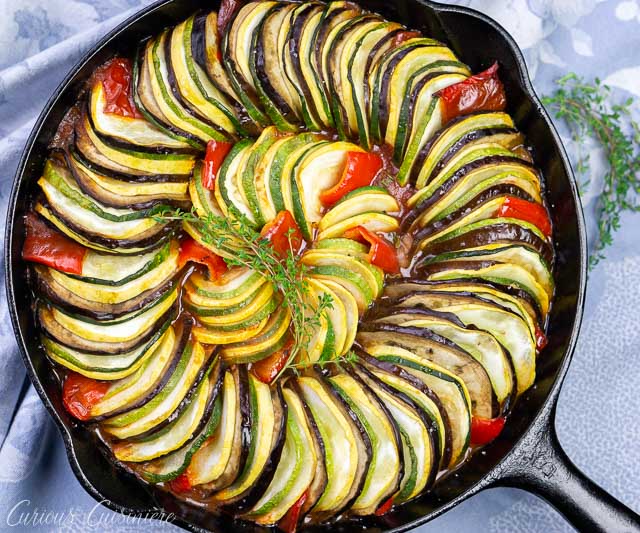
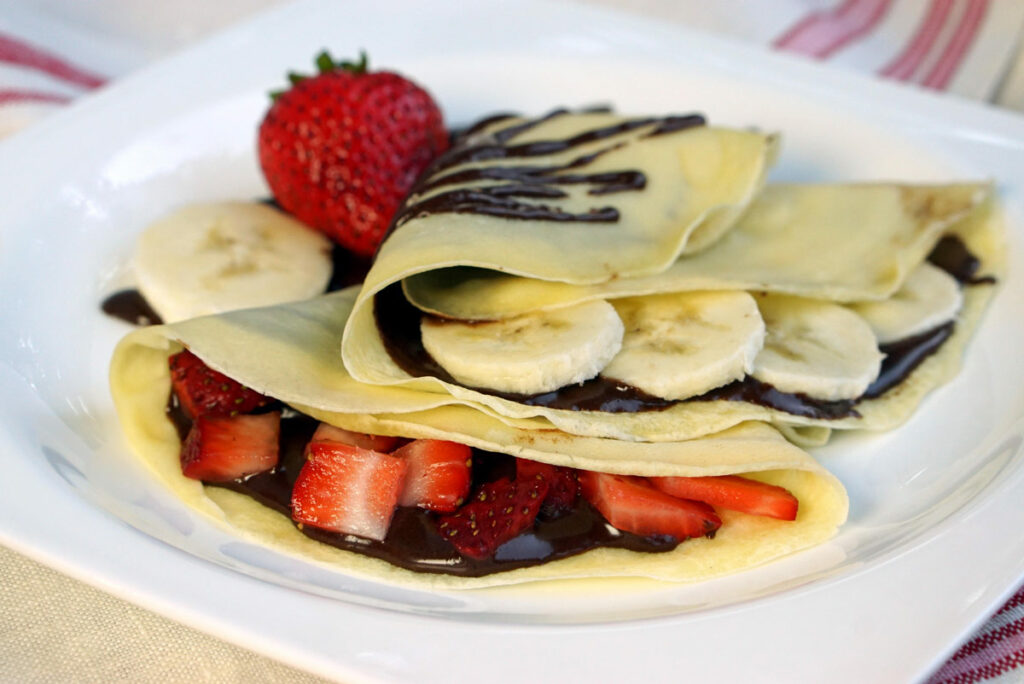

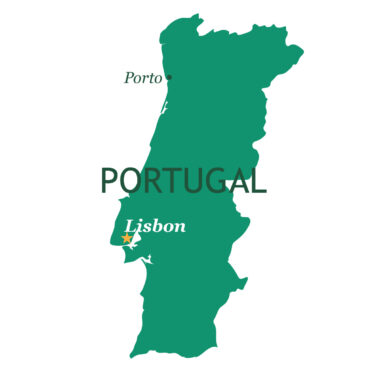
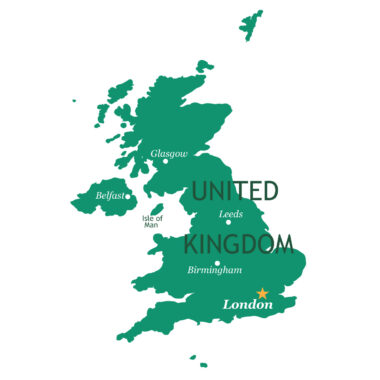


Have a Question/Comment?